Search
Did you mean: Darius I?
Search Results
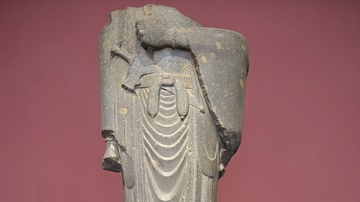
Image
Headless Statue of Darius the Great
Headless, 2.5-metre tall (8.2 feet) granite statue of Darius I (r. 522-486 BCE) originally made to be set up in Egypt and found in 1972 in Susa on the west side of the Gate of Darius. Darius the Great is dressed in the Persian robe but in...
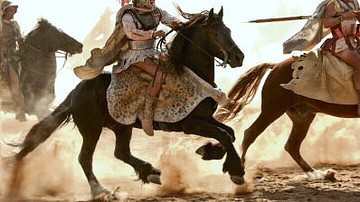
Definition
Battle of Gaugamela
The Battle of Gaugamela (1st October 331 BCE, also known as the Battle of Arbela) was the final meeting between Alexander the Great of Macedon and King Darius III of Persia. After this victory, Alexander was, without question, the King of...

Article
The Battle of Gaugamela, 331 BCE
After securing the eastern Mediterranean seaboard and Egypt, Alexander the Great pushed east into Mesopotamia with the intention of bringing Darius to battle. After crossing the Euphrates River unopposed, he marched his army eastward along...
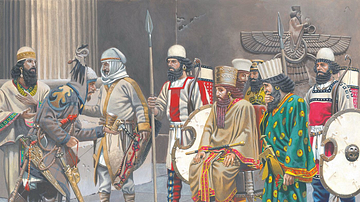
Image
Court of Darius the Great
A modern recreation of the court of Darius the Great (r. 522-486 BCE), by Zvonimir Grbasic.
Courtesy of Ancient History Magazine / Karwansaray Publishers.
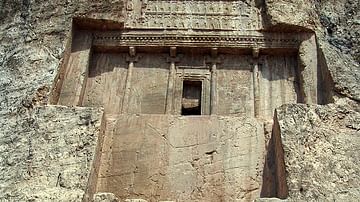
Image
Tomb of Darius I, Naqsh-e Rustam
Tomb of Darius I, Naqsh-e Rustam, near Persepolis, Iran, c. 522–486 BCE

Definition
Achaemenid Empire
East of the Zagros Mountains, a high plateau stretches off towards India. While Egypt was rising up against the Hyksos, a wave of pastoral tribes from north of the Caspian Sea was drifting down into this area and across into India. By the...
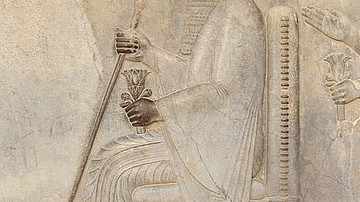
Image
Relief of Darius I from Persepolis
Relief of Darius I from Persepolis, 522-486 BCE

Image
Palace of Darius in Susa
The foundations of the Palace of Darius the Great at Susa (Iran), the capital of Elam and of the Achaemenid Empire. The palace was built on a 12-hectare (29.6 acres) artificial platform and occupied five hectares (12.3 acres). It consisted...
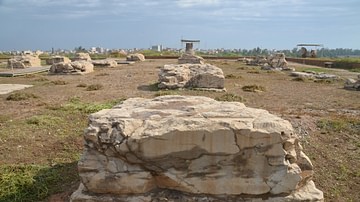
Image
The Apadana of the Palace of Darius in Susa
The Apadana (audience hall) of the Palace of Darius in Susa (Iran) was a large hypostyle room of 36 columns. Measuring 109 metres (357 feet) on each side, it was very similar to that of Persepolis in plan and dimensions with distinctive Persian...
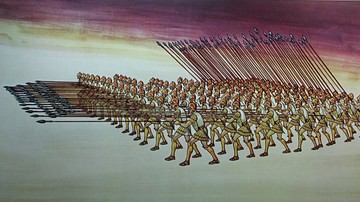
Definition
Pezhetairoi
The pezhetairoi (foot companions) were part of the imposing army that accompanied the Macedonian commander Alexander the Great (r. 336-323 BCE) when he crossed the Hellespont to face the Persian king Darius III in 334 BCE. Armed with long...